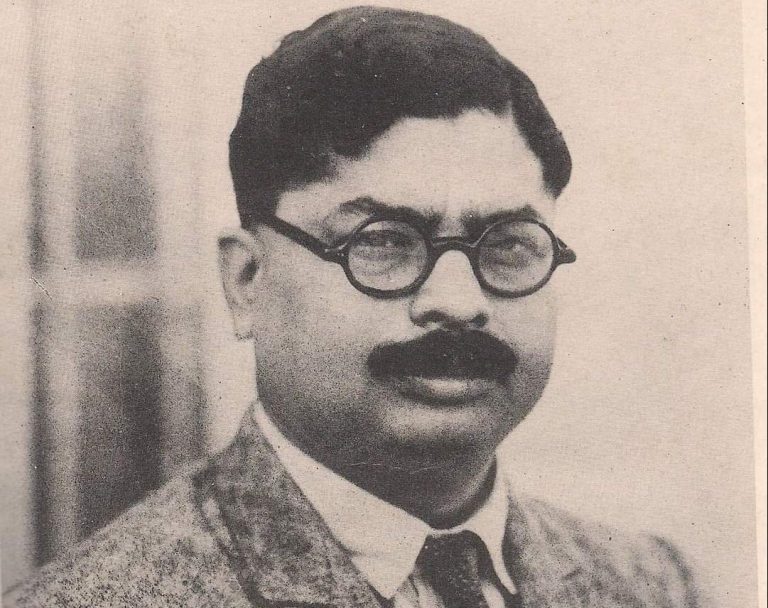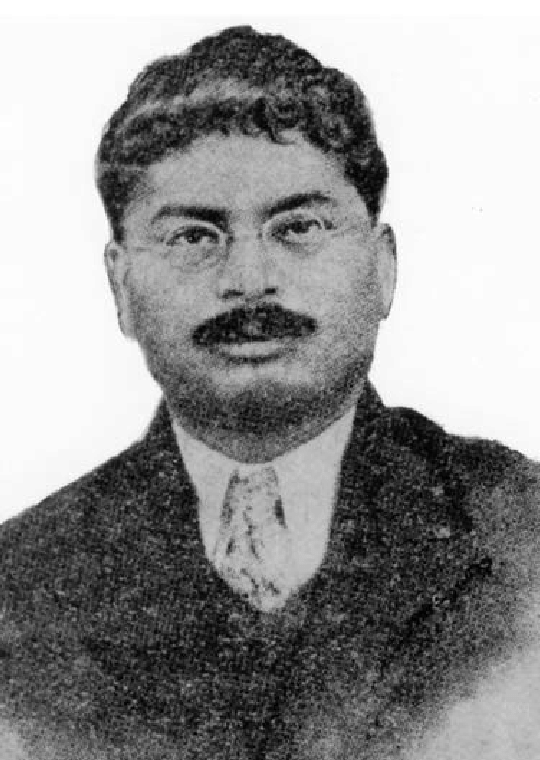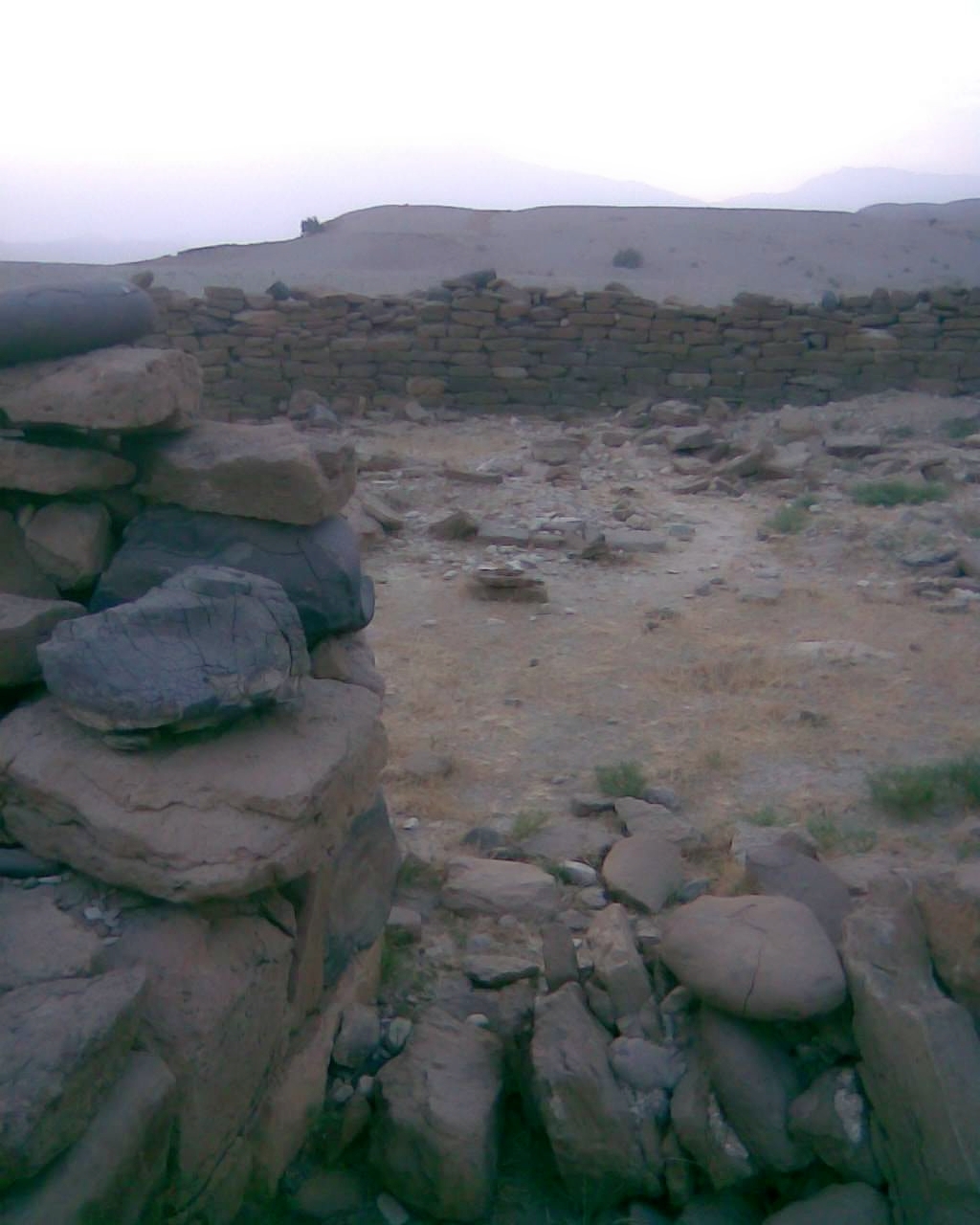
Mystery about the names of robbers, their tribe, names of witnesses etc. could be solved if the access to old record of Dadu hospital and district administration is made possible.
Aziz Kingrani
Nani Gopal Majumdar, also known as N. G. Majumdar, a well-known archaeologist of the subcontinent, explorer of ancient Sindh and author of the book ‘Explorations in Sindh’, was actually a Bengali. After the discovery of Mahenjo Daro, the British government sent him to Sindh in 1926 for further explorations and he discovered about 63 ancient archaeological sites of Indus Valley Civilization.
N. G. Majumdar had visited Sindh in two parts – for the first time from 1926 to 1930 during which he discovered very ancient sites of Indus Valley Civilization. These include Kahu Jo Daro, Chanhiyon Jo Daro, Kot DiJi, Rohri, Lohum Jo Daro, Wahi Pandhi. Munds, Ghazi Shah Daro, Gorandi mounds, Mounds of Jhukar, Ali Murad Daro, Tando Rahim mounds, sites of Pir Lakhio Daro, Pir Mashakh, Lohri and Trihni’s mounds along the bank of the Lake Manchhar, Lakhmir’s mounds in Naig valley, Amri civilization mounds, Dumb Bhatti in Kohistan, Mol Valley and at hilly streams near Jhangara.
 Among the mentioned places he discovered traces of Harappa or Mahenjo Daro civilization or even more ancient civilization including the remains of Mesopotamian and Sumerian civilizations. He also explored traces of Balochistan and other civilizations at the mentioned places which are included in his book ‘Explorations in Sindh’.
Among the mentioned places he discovered traces of Harappa or Mahenjo Daro civilization or even more ancient civilization including the remains of Mesopotamian and Sumerian civilizations. He also explored traces of Balochistan and other civilizations at the mentioned places which are included in his book ‘Explorations in Sindh’.
He came to Sindh for the second time in 1938 to search further remains of ancient Sindh. After discovering other places in Sindh, he came to excavate sites in present Dadu district of Sindh. Unfortunately, Majumdar was assassinated when he and his team were searching for the ruins of Rohel ji Kund, an ancient settlement in the Khirthar Hills, on the banks of the Gaj River in Khairpur Nathan Shah Tehsil, Dadu District.
 N. G. Majumdar was assassinated 83 years ago on November 11, 1938. Still his murder is mystery. I contacted his relatives via email to find out the real facts of his murder, body and the FIR. His relatives have made important revelations which are not on the historical record yet.
N. G. Majumdar was assassinated 83 years ago on November 11, 1938. Still his murder is mystery. I contacted his relatives via email to find out the real facts of his murder, body and the FIR. His relatives have made important revelations which are not on the historical record yet.
N. G. Majumdar’s grandson Anjan Mukherjee has shared an article in which he reveals that the group of robbers suddenly attacked him and his team thinking that he was in search of wealth. While killing him, the robbers ran away and then took refuge in Kalat state which was not under British rule and was an independent state under the control of Khan of Kalat.
Anjan Mukherjee writes that N. G. Majumdar was killed, his partner and eyewitness Krishna Dev lost his arm and Mr. Chetterjee was seriously injured. His dead body was brought to hospital in Dadu city.
Anjan Mukherjee further writes that the district administration had faced great difficulty in bringing the body of N. G. Majumdar from the hills. From the mountains, his body was brought by SP Dadu to the Gaj Bungalows on the banks of the Gaj River in the plains of Kachho and informed about incident to Collector of Dadu District KB Muhammad Bux who sent Deputy Collector Dadu.
Deputy Collector and SP Dadu brought N. G. Majumdar’s body to Dadu city hospital and after taking necessary action and medical formalities, the local administration contacted Sindh Government, Central Delhi Government and N. G. Majumdar’s relatives.
According to the collective decision of all, as per Hindu religious rites, the body of N. G. Majumdar was cremated in Dadu city and the ashes were sent to his relatives.
Later, the British government contacted the Khan of Kalat state and pressured him to arrest the dacoits and hand them over to British authorities. The Khan of Kalat made efforts under the pressure of the British government. Eventually the Khan of Kalat besieged the dacoits to capture them in which one dacoit was killed and six were arrested who were handed over to the British government.
It is also possible that these robbers were known to Kalat State or that they tried to find them under the pressure of the British government and soon as they were traced, they cordoned off the area for their arrest.
The robbers were arrested and brought to Dadu. A case was registered against the dacoits and the case was taken up in the court of Mukhtiarkar / Magistrate Dadu. The case was heard and the robbers were sentenced to life imprisonment. How long did the murder case last? What were the names of the robbers? To which tribe did they belong? Did the robbers really kill N. G. Majumdar thinking that he was looking for wealth? Or was there something else behind his assassination? The question is whether the robbers confessed to the crime or were punished in the light of statements of the witnesses. If convicted under the Statement of Evidence, what were the names of the witnesses? The answers to all these questions can unravel the mystery of the murder of N. G. Majumdar
These answers can be found in the office records of the present Civil Hospital Dadu, Mukhtiarkar Dadu and Deputy Commissioner Office Dadu. If this record is found then this historical mystery will be solved and the accuracy of the history will be fixed. In this regard, it is hoped that a record will be provided which will alleviate the pain of Sindh over the murder of N. G. Majumdar.
____________________
 Aziz Kingrani, hailing from village Haji Manik Kingrani, Johi, Dadu District, Sindh, Pakistan, is poet, short story writer, playwright and a research scholar. He has been contributing in the fields of history and literature since five decades. He has served as a professor as well. His 17 books are published in English and Sindhi language. His articles in English, Sindhi and Urdu have been published in various newspapers and magazines.
Aziz Kingrani, hailing from village Haji Manik Kingrani, Johi, Dadu District, Sindh, Pakistan, is poet, short story writer, playwright and a research scholar. He has been contributing in the fields of history and literature since five decades. He has served as a professor as well. His 17 books are published in English and Sindhi language. His articles in English, Sindhi and Urdu have been published in various newspapers and magazines.